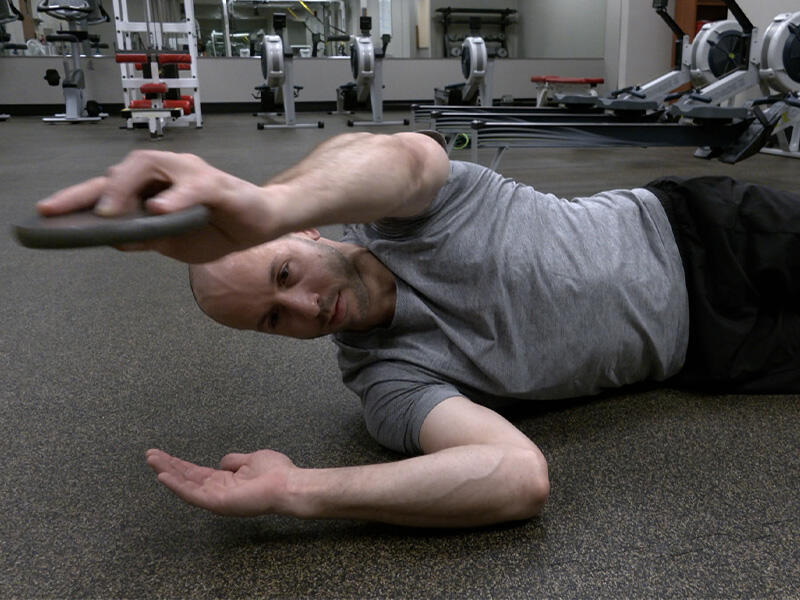Anthony Soyak is a self-described gym rat. He’s been doing CrossFit and lifting weights for years. But three years ago, he started feeling a pain in his shoulder.
He started with treatments like physical therapy, dry needling, and chiropractic visits. He saw some relief, but the pain would always reappear.
The pain started while he and his family lived in Milwaukee, Wisconsin. Eventually, he took his current job at Sanford Health, moving to Sioux Falls, South Dakota.
At Sanford, he met with an orthopedic surgeon in March 2021, who told him some unexpected news.
“We discovered that I had a partial rotator cuff tear in my left shoulder,” said Soyak.
Surgery, or cells?
Soyak had two treatment routes. The first was surgery, where he would face over a year of recovery time.
The second was cell therapy.
Soyak visited with Donella Herman, M.D., who does the cell treatment.
“She answered all of my questions, and explained that it’s less invasive and has a quicker recovery time. That was the selling point for me,” he said.
Learn more: Cell therapies at Sanford Health
BMAC treatment, or bone marrow aspiration concentrate, is the cell therapy Soyak received.
The same-day procedure takes bone marrow cells from an area of the body. Then, the concentration is separated, isolating the therapeutic cells. An ultra-concentrated BMAC dosage is then injected back into the site of injury, using an ultrasound to target the exact location, to expedite the healing process.
But, before the therapeutic cells are injected back into a patient, they’re rigorously tested to ensure safety and efficacy.
This meticulous nature is what separates Sanford Health from other health care providers who claim to offer cell therapy.
Recovery from BMAC treatment
Soyak walked out the same day in a sling. Instead of a year, or possibly more, his recovery time was three weeks.
He periodically met with Dr. Herman, to see how the tear was responding to the therapy. Each time he went, they did an ultrasound.
“You’d see the initial scans where there was a gap in the muscles, and actually see where the tear was. Then, she would compare that to where we were.
“There is no more gap. Not only how I felt, but to actually see the progress was really cool,” he said.
The more Soyak takes it slow, the stronger he’s become.
“I don’t have any pain in my daily activities anymore. I don’t wake up in pain. So, from a normal standpoint, I feel great, and I’m starting to get more confident in the gym.”
Read more
- Sanford Health pioneers use of body’s own stem cells
- What you need to know about joint pain
- PRP injection helps patient with chronic ankle injury
…
Posted In Orthopedics, Rehabilitation & Therapy, Research, Sioux Falls, Sports Medicine

